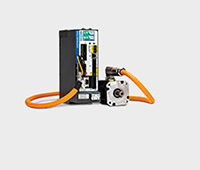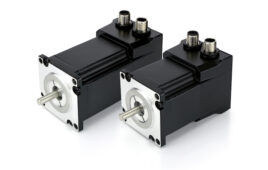By Cees Links • Founder & CEO of GreenPeak Technologies
The Internet of Things is coming quickly and as it does, there will be an overwhelming demand for “sentroller” and edge devices – in the home, in business and enterprise, as well as in industry.
 The IoT / M2M market is at the beginning of an exponential growth curve. In many homes today, web connected devices include game boxes, laptops, tablets, smart phones, desktop computers, cameras, streaming audio and video players. “Sentroller” (sensors, controllers and device actuators) applications, such as security systems, home climate management, health monitoring, and home automation will add many connected devices to that mix.
The IoT / M2M market is at the beginning of an exponential growth curve. In many homes today, web connected devices include game boxes, laptops, tablets, smart phones, desktop computers, cameras, streaming audio and video players. “Sentroller” (sensors, controllers and device actuators) applications, such as security systems, home climate management, health monitoring, and home automation will add many connected devices to that mix.
Where today, a typical home may have between five or ten connected devices, within a decade, a smart home could easily have over a hundred different connected sentrollers in the building—sensors and cameras tracking and sensing, local and cloud based controllers to manage the network, and actuators that can turn on and off the various applications, controlling almost every aspect of the home environment. All of these home services that will connect to a local home gateway and in turn connect to the web, will be managed by smart phones or other web connected devices.
Depending on data bandwidth needs, range and power options, the smart home of the future will probably offer two networks —a high speed WiFi based network for AC connected big data devices like TVs, audio systems, and gaming consoles. In comparison, the network of small, wireless and battery powered devices scattered through the home will be powered by ZigBee.
1. ZigBee is an international standard that can be used anywhere without requiring additional government or industry certifications and testing. Thus, it is a safe bet for aspiring sentroller device developers.
2. ZigBee is becoming commonplace in homes worldwide. Comcast, EchoStar, and other operators are putting ZigBee in almost all their new set top boxes and home gateways. By using ZigBee as the connection between the box and the remote control, these companies have taken the first step to integrating ZigBee in the home. Once ZigBee is in the box—whether it is a standalone home control box, part of an internet gateway, or even built into a TV set, this connectivity enables a central control point for the new home cloud.
Everything you need to know about WiFi essentially applies to ZigBee. ZigBee uses the same spectrum (2.4 GHz), transmits through walls, floors and furniture, offers about the same range (more or less 100 feet or so), is comparably secure, and like WiFi, is rarely affected by interference.
3. ZigBee is essentially low power WiFi. It only needs to send a small signal occasionally, so it does not require the bandwidth or the power needed for streaming video or audio, gaming or voice. Because of the low power requirement, a small watch type battery can energize a ZigBee radio for many years. The real gating factor is the actual lifetime of the battery. This makes devices essentially maintenance free. Install it – stick on the window and wall, connect to the local ZigBee network, and the system should run for a decade or so.
Other ZigBee applications – such as light switches –do not require any power at all. The energy expended by a person flicking a ZigBee light switch is enough power to successfully send an on/off signal across the room to a light, thereby turning it on. Even more interesting, depending on how the switch’s radio is programmed, that one flip of the switch can travel to the home gateway, turn on an entire family of lights, close the garage door, or manage a network of smart devices.
 For example, you come into the house and flick on the switch. As it is evening, the sentroller network’s intelligence – either in the cloud or in the gateway – knows which lights you prefer to have on at different times, days, and even different times of the year. The intelligence also talks to the climate control system and activates either the heater or the AC depending on the season or environmental temperature. The same light flick can also initiate your entertainment system – turning on the TV in the den and closing the curtains. Once the initial switch message is received by the home gateway, an array of possible results can ensue depending on how the home is programmed.
For example, you come into the house and flick on the switch. As it is evening, the sentroller network’s intelligence – either in the cloud or in the gateway – knows which lights you prefer to have on at different times, days, and even different times of the year. The intelligence also talks to the climate control system and activates either the heater or the AC depending on the season or environmental temperature. The same light flick can also initiate your entertainment system – turning on the TV in the den and closing the curtains. Once the initial switch message is received by the home gateway, an array of possible results can ensue depending on how the home is programmed.
GreenPeak
www.greenpeak.com
Filed Under: CONNECTIVITY • fieldbuses • networks, MOTION CONTROL





Tell Us What You Think!